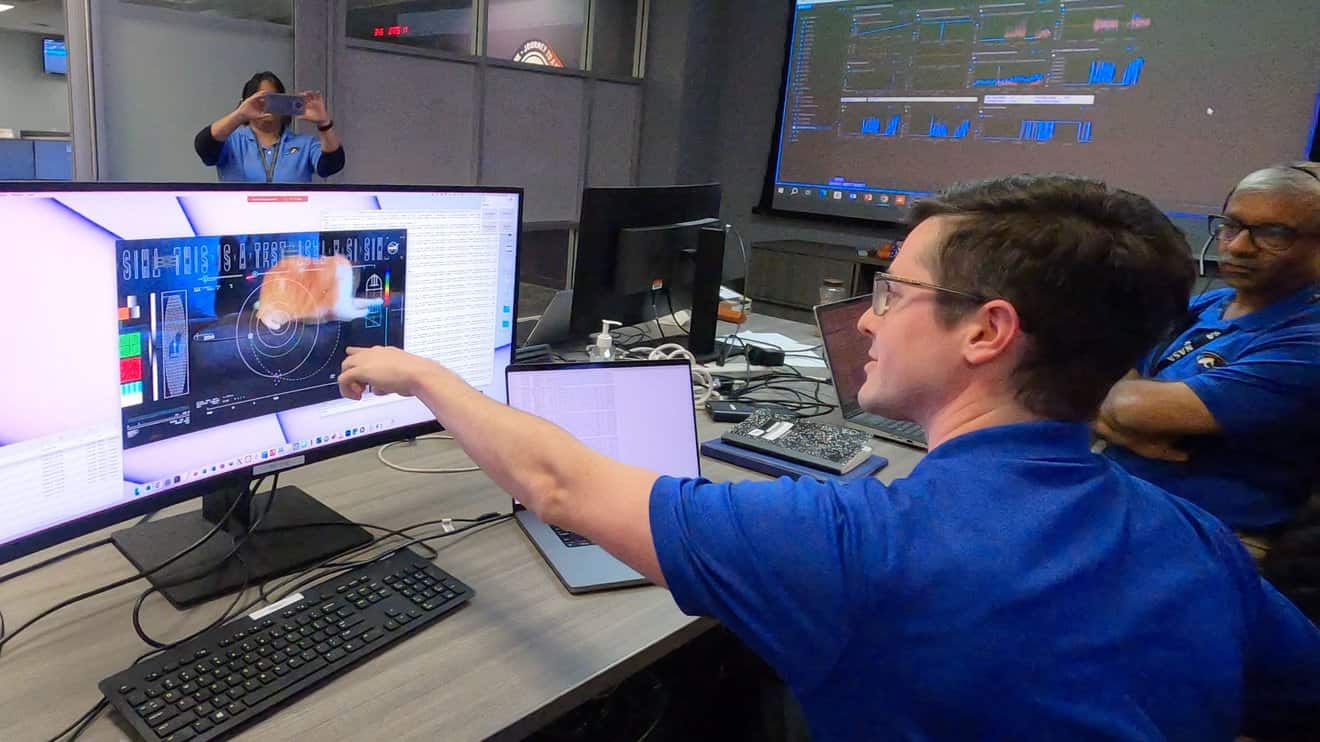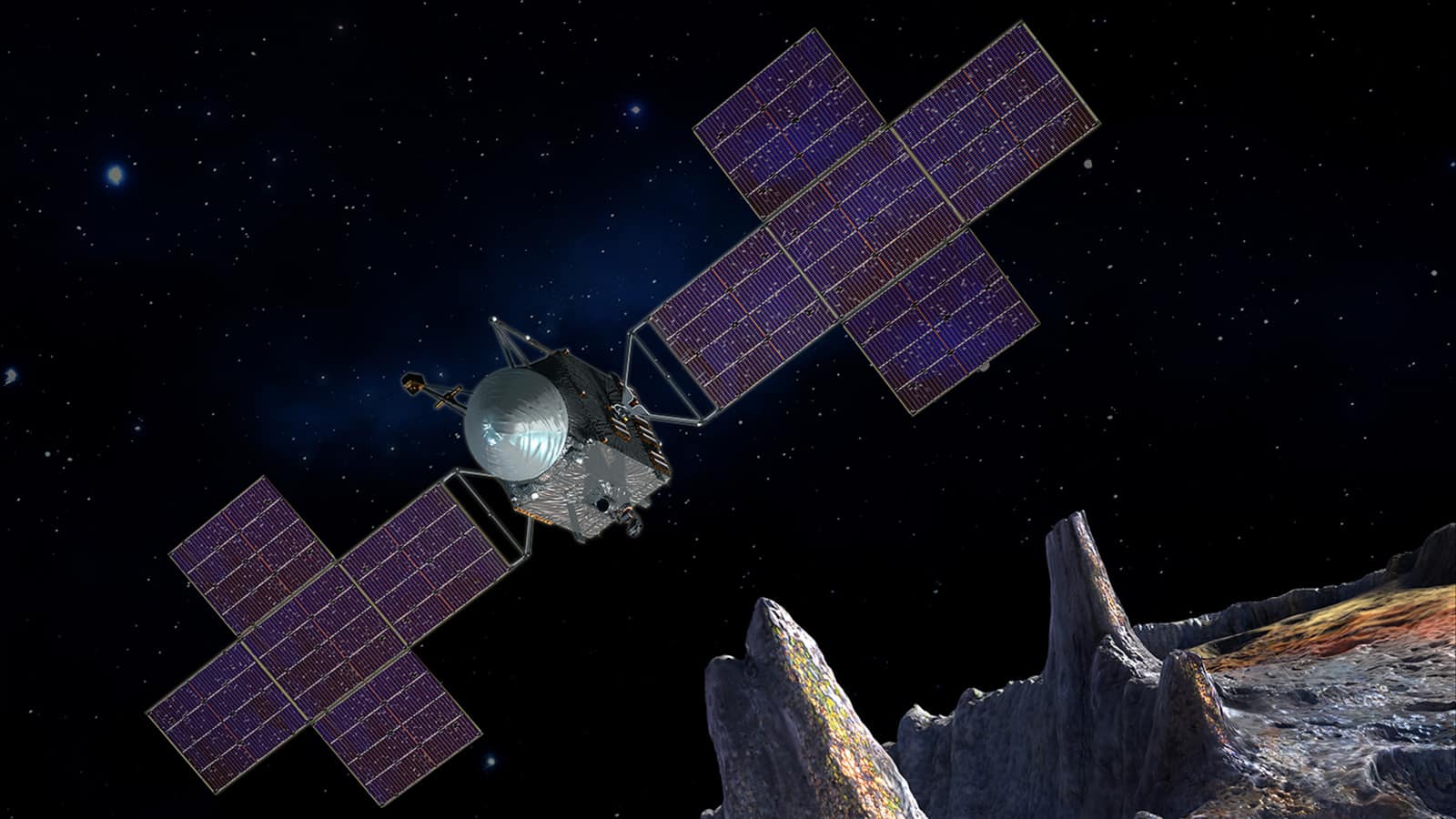NASA just made history. The space agency sent a video from nearly 19 million miles away at a maximum bit rate of 267 megabits per second (Mbps) — better than the internet I’m currently writing on.
They did it with a cutting-edge instrument called a flight laser transceiver and the video signal took 101 seconds to reach Earth. The best part of it all? It’s a video of a cat chasing a laser.
Cats rule broadcasts
The video, featuring a cat named Taters, marks an important moment in our space exploration. Exploring the deeper parts of space isn’t just about building engines and life support, it’s also about communication. If we want to explore the solar system (and eventually, go beyond that), we need ways to beam information to and from Earth.
This is where Taters’ video comes in. Taters is an orange cat and the pet of a JPL employee. The video shows Taters chasing a laser pointer, with overlayed data of various NASA missions. Taters’ heart rate, color, and breed are also on display.
There’s a historic reference here, too. In 1928, a small statue of Felix the Cat (a popular cartoon character) was used in test broadcast transmissions.
But what’s really cool, other than the content of the video, is the speed at which it was sent.
“Despite transmitting from millions of miles away, it was able to send the video faster than most broadband internet connections,” said Ryan Rogalin, the project’s receiver electronics lead at JPL. “In fact, after receiving the video at Palomar, it was sent to JPL over the internet, and that connection was slower than the signal coming from deep space. JPL’s DesignLab did an amazing job helping us showcase this technology – everyone loves Taters.”

Space internet
The first deep space transmission (“first light” as NASA calls it) was beamed on November 14 from the Psyche mission. The Psyche mission represents an expedition to an asteroid abundant in metals, located in the asteroid belt between Mars and Jupiter.
NASA steadily increased the download speed of the transmission to 62.5 Mbps, 100 Mbps, and finally to 267 Mbps. Using lasers, it manages to achieve these speeds from a whopping 31 million kilometers away (or about 80 times the Earth-Moon distance).
“When we achieved first light, we were excited, but also cautious. This is a new technology, and we are experimenting with how it works,” said Ken Andrews, project flight operations lead at JPL. “But now, with the help of our Psyche colleagues, we are getting used to working with the system and can lock onto the spacecraft and ground terminals for longer than we could previously. We are learning something new during each checkout.”

Overall, NASA has downloaded 1.3 terabits of data in about a month of testing. For comparison, the Magellan mission to Venus sent 1.2 terabits during its entire mission from 1990 to 1994.
“This accomplishment underscores our commitment to advancing optical communications as a key element to meeting our future data transmission needs,” said NASA Deputy Administrator Pam Melroy. “Increasing our bandwidth is essential to achieving our future exploration and science goals, and we look forward to the continued advancement of this technology and the transformation of how we communicate during future interplanetary missions.”
Changing how we see the solar system
This technology could revolutionize how we send and receive data from deep space. Traditional radio waves have served us well, but laser communication offers a much higher data rate. This means more detailed images, more data from scientific instruments, and even the possibility of high-definition video streaming from distant planets or moons.
The implications for future missions are significant. Imagine astronauts on Mars able to send high-resolution video back to Earth, or probes at the outer edges of our solar system transmitting detailed data faster than ever before. This could dramatically change our understanding of space and our place in it.
The success of this laser communication test is a step towards making these possibilities a reality, but it’s still early days. As NASA continues to finesse the technology, new avenues for space exploration are opening up — but there’s still a way to go.


